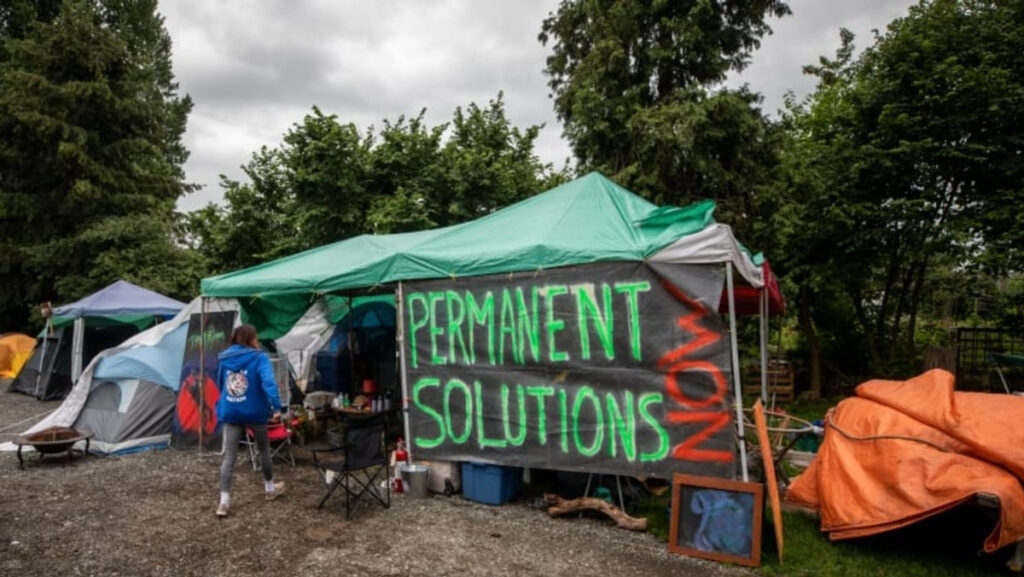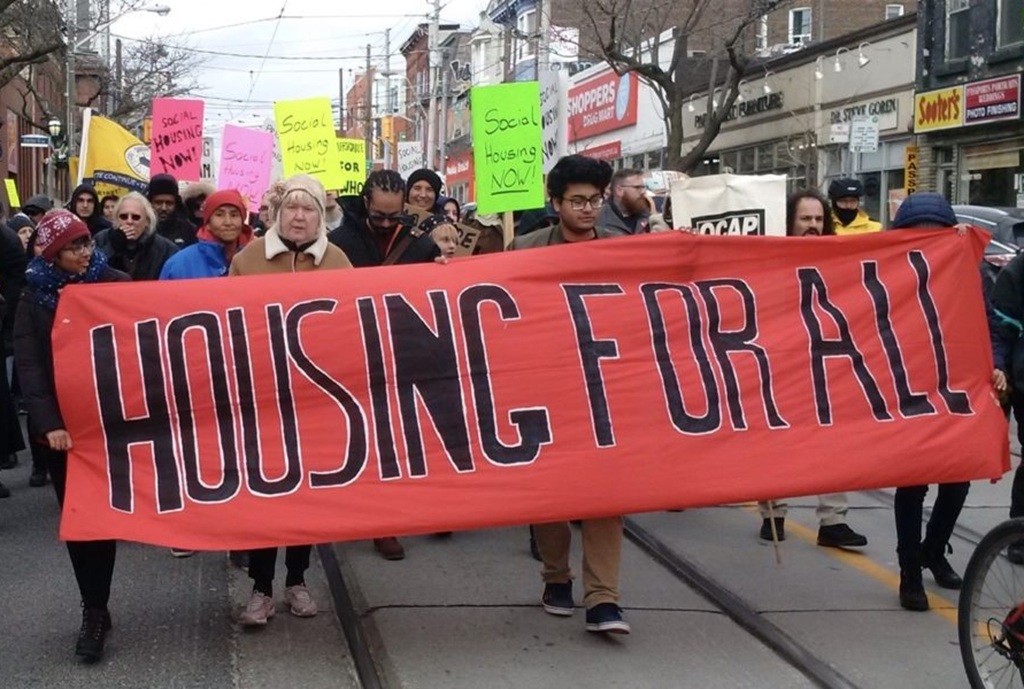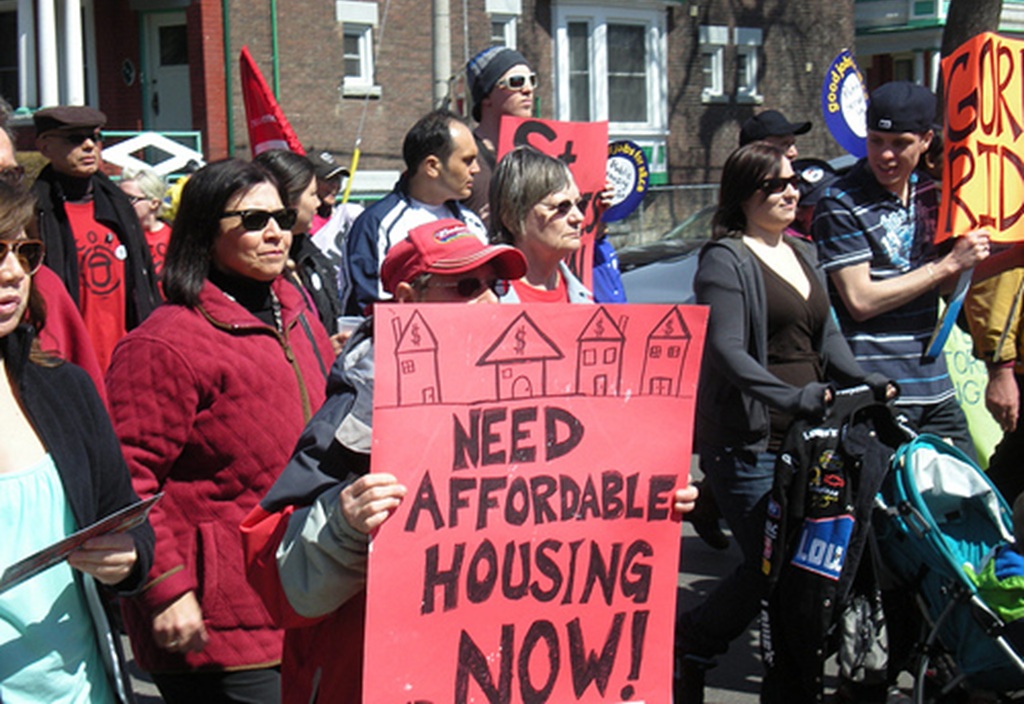VANCOUVER – Canada’s housing crisis in 2025 isn’t just a headline—it touches almost everyone. Home prices across the country are outpacing incomes, making it harder than ever for people to buy or even rent a place of their own.
Many are watching city populations surge while fewer new homes get built, leaving renters and families scrambling for options. It’s tempting to point the finger at a single culprit, but the truth is more tangled. Policy decisions, slow construction, immigration, and the lasting effects of low interest rates all play a part.
How Did Canada’s Housing Crisis Take Root?
The struggle to find a home people can afford didn’t appear overnight. For more than two decades, a mix of government policy, economic shocks, fast-growing cities, and shifting investor behaviour has shaped the tough market Canadians face today. The roots of the current crisis run deep, and understanding them means looking back to the early 2000s, the global financial crash, and choices that made homes feel further out of reach for millions.
Monetary Policy and the Era of Ultralow Interest Rates
The Bank of Canada’s playbook after the 2007-08 financial meltdown set the stage for big changes in how Canadians could buy homes. When global markets crashed, the Bank slashed interest rates to historic lows to prevent a deeper recession. This move made borrowing money cheaper than it had been in a generation. For a while, it looked like a lifeline for Canadian families, but there was a hidden cost.
- Easier access to credit: Homebuyers could qualify for bigger loans on the same paycheck.
- More investors: Low borrowing costs encouraged more people to buy, not just one home, but two or three.
- Household debt: Canadians now carry some of the highest personal debt levels among developed countries.
Low rates stuck around for years. By the early 2010s, home prices began racing past wage growth. According to data tracked over 25 years, housing affordability in many major cities started to slip by the mid-2000s. Since then, mortgage rates have rarely given buyers a break, while home prices have kept climbing—leaving first-time buyers and renters feeling squeezed.
Population Growth and Housing Supply Imbalance
More people, but not enough places to live—this is the simple math behind much of Canada’s housing crunch. Since the early 2000s, Canada’s population has grown rapidly, fueled in large part by higher immigration numbers. But construction hasn’t kept up.
Recent analysis highlights how, from 2021 to 2024, housing starts—new homes being built—have barely kept pace with numbers seen back in the 1970s, even as the population has soared well past those levels. A report from the National Post notes that housing starts remain stuck at 1970s levels, while Canada’s population growth rate is among the fastest in the G7.
Here’s what that looks like on the ground:
- Long waitlists and crowded rental units in big cities.
- Families priced out of the market, forced to move further from work.
- Younger people are staying at home longer or sharing crowded apartments.
Immigration brings big benefits to the economy, but without enough new homes, even strong growth can make the market tougher for everyone.
The Role of Speculative Investment and Housing Financialization
Low rates didn’t just help families. They opened the door to more speculative buying. When homes became easy to finance and prices kept going up, real estate started looking less like a basic need and more like an investment vehicle.
- Speculators jumped in: Investors bought homes to “flip” or hold for rental income, betting on continued price growth.
- Financialization: Big institutions, not just individuals, began buying up residential properties across the country.
- Supply bottlenecks: More buyers chasing too few homes pushed prices even higher.
The result? Regular Canadians had to compete not only with each other but with powerful investors and funds. As the Globe and Mail points out, there was a visible shift around 2007-2008 when houses started to become seriously unaffordable for the average person. Supply issues have only worsened this effect, as new homes get snapped up by those looking for profit instead of a place to live.
Decisions made in bank boardrooms, combined with policy choices and demographic shifts, set this market in motion. The current squeeze is not the product of a single policy, but the accumulation of years of easy credit, national growth, and buying homes for profit. The outcome is a housing market where a safe, affordable place to live has turned into a distant goal for too many families.
Government Policies and Political Accountability
Canada’s housing crisis is not just a matter of economics—it’s closely tied to political choices and policy decisions at every level of government. Federal, provincial, and municipal leaders have all played roles in shaping the supply of homes, how land can be used, and how much builders and residents must pay to comply with local rules. Some policies may have been designed to help, but restrictive zoning, political motivations, and uneven intervention have often made finding an affordable home even harder.
Zoning, Land Use, and Urban Planning Constraints
Zoning and land use rules might sound dry, but they sit at the heart of Canada’s housing woes. Most cities have zoning bylaws that strictly control what kind of buildings can go where. It’s common for large swaths of urban land to be limited to single-family homes, leaving little space for apartments, townhouses, or gentle density.
- Limited land for multifamily homes: Zoning bylaws often reserve only a fraction of land for multi-unit housing, restricting options for people who can’t afford detached homes.
- Barriers to new construction: Minimum lot sizes, height limits, and setback rules make it tough—and expensive—to build anything new, especially in areas close to jobs and transit.
- Local politics and homeowner influence: Elected officials face pressure from current homeowners who want to protect property values and neighbourhood “character.” This can slow or block projects that add needed housing.
For a deeper look at how these rules shape development, the AIC Canada overview of zoning and land use controls breaks down municipal approaches and their impact. Municipalities across Canada have the power to encourage affordable housing, but too often, they protect the interests of existing property owners at the expense of new buyers and renters. As a result, many cities struggle to add homes where people want to live.
National and Provincial Housing Policies
Federal and provincial governments have launched dozens of initiatives to address affordability, ranging from billion-dollar investments to new incentives for builders. One flagship move is the National Housing Strategy, a $115+ billion, decade-long plan launched in 2017 to give more Canadians a place to call home.
Key government actions:
- Funding for affordable homes: Billions pledged to build, repair, and preserve affordable housing units.
- Incentives for municipalities: Money and policy tools for cities that speed up approvals and welcome more housing.
- Infrastructure support: Federal and provincial dollars directed at transit, roads, and utilities to encourage new development.
Despite the bold promises, many critics argue the results have fallen short. While thousands of units have been built or preserved, demand keeps outpacing supply, especially in fast-growing regions. Reports like the CD Howe Institute’s Housing Policy for a Growing Canada point to slow progress and recommend waiving hefty municipal development fees to spark more private building. Some provinces, including Ontario and British Columbia, have recently set ambitious targets and taken steps to override restrictive local bylaws. However, gaps between targets and actual new homes remain wide.
Regulatory, Tax, and Demand-Side Interventions
To fight speculation, slow runaway prices, and boost affordability, governments have tried a variety of rules and financial tools. These include both carrots (incentives) and sticks (taxes, restrictions).
Examples of interventions:
- Tax incentives for builders and first-time buyers: Some provinces have offered rebates or exemptions to make new homes more appealing or help first-time buyers enter the market.
- Mortgage relief and new financial rules: Stress tests, changes to down payment requirements, and tweaks to mortgage insurance have aimed to keep borrowers from getting overextended.
- Bans on foreign buyers: In recent years, several provinces—and the federal government—have limited or banned home purchases by non-residents to cool speculation.
- Policies targeting renters: Rent control rules, protections against unfair evictions, and funding for rental construction have varied widely by province and city.
- Crackdowns on speculation and short-term rentals: Taxes on vacant homes and regulations for platforms like Airbnb try to return units to the long-term rental market.
Not all these policies have worked as hoped. While measures to stop foreign buyers and short-term rentals grab headlines, high costs and sluggish new construction remain the biggest hurdles to affordability. Some analysts argue that demand-side policies alone can’t fix a supply shortage—zoning reform and faster building approvals are what’s truly needed.
Ultimately, Canada’s patchwork of policies shows how deeply politics influence housing outcomes. Well-intended rules sometimes make buying or building even tougher, while others slowly ease the path for new homes. Accountability matters—without a clear focus on building more homes in the right places, the crisis will continue.
Compounding Factors: Economic and External Pressures
Canada’s housing crisis is more than just a story of supply and demand. Big-picture economic forces—from skyrocketing material prices to deep income divides—shape how fast and affordable new homes can be built. These pressures create a tidal wave that affects everyone, especially those already struggling to keep up. Building more homes helps, but it won’t fix the cracks that run through the foundation of the country’s affordability problem.
Construction Costs, Labour, and Development Delays
What’s driving home prices up, even when the industry wants to build more? For starters, construction costs aren’t what they used to be. According to a recent CBC report, building a single home is now far pricier because of spiking land values, rising costs of steel and lumber, and global shocks that hit supply chains.
Cost escalation is a daily challenge for builders:
- Material prices: Everything from drywall to copper wire has seen unpredictable price hikes. Developers cannot plan projects with stable budgets when prices change overnight. The 2024 cost escalation update by Altus Group notes that even with some recent reductions in material costs, unpredictability and high base prices remain major hurdles.
- Labour shortages: There’s a real shortage of skilled tradespeople. Fewer young people are entering the trades, and a wave of retirements is only making things worse. Without enough carpenters, electricians, and plumbers, projects stall or cost more as workers can command higher wages.
- Long approval timelines: Permitting and municipal approvals can stretch on for months, sometimes years. Projects get held up in red tape, creating costly delays. As highlighted by the Mortgage Professional America perspective on construction delays, these hold-ups ripple out to slow every part of the supply chain, from land acquisition to move-in day (Can Canada build its way out of a housing crisis?).
- Global influences: Tariffs on imported materials, border disruptions, and currency shifts all feed into higher costs.
These bottlenecks put a ceiling on how many homes can actually be built, even as demand explodes. The higher costs get passed straight to buyers and renters, pricing many out before they even get a chance to bid.
Income and Affordability Gaps Across Canada
Rising costs might be easier to swallow if incomes kept pace. But for many Canadians, wages and savings are stuck in slow motion while home prices sprint ahead. The affordability gap hasn’t just grown; it’s split wide open along class, age, and regional lines.
- Income stagnation: The real after-tax income for the poorest half of Canadians has barely budged over the past decade, even while GDP and executive pay soared. This report on Canada’s affordability divide highlights how the wealthiest 1% have pulled far ahead, leaving millions behind.
- Regional differences: The price of a home compared to local wages varies wildly across Canada. In cities like Toronto and Vancouver, even middle-income earners struggle to qualify for a mortgage, while in some smaller cities or rural areas, the gap isn’t as severe but is quickly widening.
- Youth and first-time buyers: Younger Canadians face the steepest barriers. With high rent, student debt, and wages lagging far behind real estate prices, many can’t save for a down payment or even dream of ownership. Renters and lower-income households see more of their pay go straight to housing, making it nearly impossible to get ahead.
- Wealth concentration: The wealthiest 20% now control over two-thirds of Canada’s total net worth, according to Statistics Canada. This leaves less for the bottom half, who watch as homeownership—once a realistic goal—slips further from reach.
- Growing inequality: As pointed out by Policy Options, the gap between the richest and poorest households is the largest it’s been in decades, feeding into resentment and mistrust.
These affordability gaps mean that even building more homes won’t guarantee that people who most need them can afford them. The crisis isn’t just about how many houses get built—it’s about who can afford to live in them. Without serious action on both costs and incomes, thousands will remain stuck on the outside looking in.
Canada’s housing crisis is the result of years of missteps on both sides—market forces and public policy. Supply hasn’t kept up with a growing population, while policies at every level have often protected existing interests over new solutions. High costs and slow approvals have worsened the crunch, and turning homes into investment vehicles has driven prices out of reach for many.
Real change will take more than short-term fixes. Coordinated action—across governments, builders, and communities—can restore balance and give regular people a fair chance. Readers can help by holding leaders accountable, staying informed, and getting involved in local decisions.











